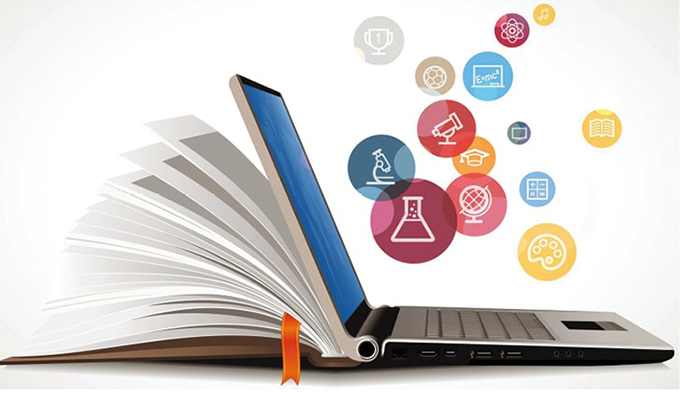
On the Internet forums, social networks or WIKI, the knowledge flows today with the speed V, without the intermediary of the teachers . But if they must admit to no longer being the sole depositories of knowledge, their role as smugglers is only transformed. In the wealth of information conveyed on the web, you have to know how to sort! The teacher then becomes the one who guides the student on the path of knowledge, helping him to take a critical look at the mass of messages he receives.
In this, some consider that digital is a key area in the evolution of the teaching profession, transforming both its posture and its activities as its skills. It is this problem that we explored in an article written with Laurence Hélène in 2016, “The teacher reinvents itself: the Smarty revolution! “.
We interviewed several teacher-researchers in management on how they qualified the evolution of their profession and their practice because of the introduction of digital into the training space. This study shows a transformation of the activity both in the classroom and outside and insists on the change of posture of the practitioner.
Fun and technical classes
With digital, the course is made more fun and can be greatly enriched. The use of a variety of educational resources allows the teacher to innovate and be creative; it is therefore a great opportunity to develop his ingenuity. By allowing to add or remove an activity along the water, the digital also gives the means to adapt to the rhythms of the learners. In a way, they are the ones who hold the reins of the rhythm of learning.
But in the face of these benefits, teachers perceive several disadvantages. They become dependent on the technical conditions for the conduct of their course, with the effect of penalizing the teacher “not geek” and discredit in the eyes of students. The risk is also to become a technical trainer if we focus too much learning on the manipulation of digital tools rather than the disciplinary subjects of his course.
Outside the classroom, it takes time to rethink the course sequence (studying the different possible paths of knowledge acquisition) and their content. It is an important intellectual mobilization to search for appropriate digital resources and to check the coherence of the whole.
The correction time is inversely faster thanks to its automation. This also has the advantage of imagining more relevant evaluation methods for students. Thanks to the connection time counters via the platform, the teacher has a finer vision of what is being studied and understood. It allows you to adapt and be responsive.
A role of coach
More profoundly, digital brings about a change of posture on two levels. In the relationship to the student first of all, we must encourage learners to be more proactive. This “more unstructured” work environment also breaks the distance and classic codes of seriousness and creates another dynamic. The exchange spaces (chats, forums) allow, for their part, to get out of the classroom and help to “change the judgment of students on the teacher.”
In terms of role, the teacher becomes a tutor, a coach. We expect him to listen, to engage in the path of reflection and reflexivity, to guide to the right resources, to federate the opinions expressed, to give meaning to the students’ comments, to promote the sharing of knowledge between students. He becomes a “knowledge facilitator” and a “learner manager”.
Above all, the evolution of the role of the teacher towards the tutoring posture as we have just described it creates a form of identity tension and requires a change in the social outlook (especially of learners) on this profession. At the operational level, new activities and new skills call for thinking about teacher training by integrating the digital issue. This is one of the recommendations of the European Commission ( in a 2015 report ).
Build scenarios
This new training of teachers would be oriented along three axes. First of all, it is necessary to know how to build a multimodal and multi-temporal educational scenario. Since it is no longer a matter of linearly sequencing the sequences one after the other, as a training in traditional pedagogy could teach, it is necessary to acquire a know-how and tools to manage the multidimensional aspect of this activity. This in the context of proposing activities allowing: the collective reflection, the cooperation of the students, the co-development of the knowledge and their capitalization.
The other axis concerns the technical tools. Depending on the individual and / or institutional choices made (using digital tablets, using a teaching platform, using cell phones, etc.), the teacher must know how to handle them and know their potentialities.
The last axis concerns educational resources and touches as much on their use as on their design for a certain number of them. In front of the field of possibilities offered by the digital currently, the list is long: blog, Web site, MOOC, SPOC, videos … for the resources of contributions; content sharing tools, chats and forums for exchange resources.
In conclusion, the space-time to learn, because of the digital in our lives and in our formative spaces, is now without borders (we must know how to think outside the walls). If new activities are to be conducted for the teacher, a different posture is to adopt, a posture guide to knowledge.
These activities and this new position require new skills that should be developed: through formalized training mechanisms but also by promoting, at the institutional level, individual experiments, leaving the right to the error, by developing spaces for learning. exchange of practices between teachers, highlighting pedagogical innovations, etc.
Author Bio: Sarah Alves is Research Professor in Human Resources at the Normandy School of Management – UGEI
